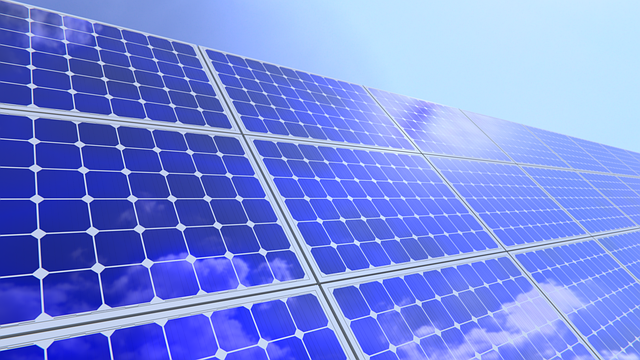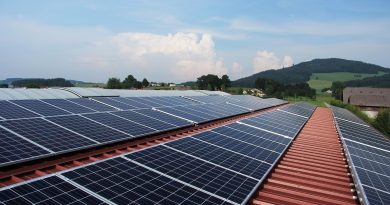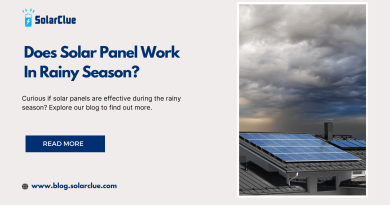Setup-On-Grid Solar Power System: Explained
Solar power has become an increasingly popular source of renewable energy in recent years, and one of the most common setups used to harness solar energy is the setup-on-grid solar power system. This system allows homeowners and businesses to generate electricity using solar panels and connect to the local power grid, providing several benefits including lower electricity bills and reduced carbon emissions. In this blog, we will explore the concept of a setup-on-grid solar power system, its components, advantages, and how it works in a grid-connected environment.
What is a On-Grid Solar Power System?
A setup-on-grid solar power system, also known as a grid-tied or grid-connected system, is a solar energy setup that is connected to the local power grid. Unlike off-grid systems that operate independently, a On-grid solar power system allows users to generate their own electricity while also remaining connected to the traditional power grid.
Components of a On-Grid Solar Power System
To understand how a On-grid solar power system works, it is essential to familiarize yourself with its components. The key components include:
1. Solar Panels: These are the primary components that convert sunlight into electricity using photovoltaic (PV) cells. Solar panels are typically mounted on rooftops or mounted on the ground in areas with ample sunlight exposure.
2. Inverter: The inverter plays a crucial role in a On-grid solar power system as it converts the direct current (DC) electricity produced by the solar panels into alternating current (AC) electricity, suitable for use in homes and businesses.
3. Metering System: A bidirectional meter is installed to measure the electricity consumed from the grid and the surplus electricity fed back into the grid. This meter allows users to keep track of their energy production and consumption.
4. Mounting System: Solar panels need to be securely mounted on the rooftop or ground. Mounting systems provide the necessary support to ensure the panels withstand the elements and maximize sunlight absorption.
5. Electrical Wiring: Proper wiring connects the solar panels, inverter, metering system, and the utility grid, ensuring the efficient flow of electricity between the different components.
Advantages of a On-Grid Solar Power System
1. Reduced Electricity Bills: By producing your own electricity, you can significantly reduce your reliance on the traditional power grid. This results in lower electricity bills, especially during periods of high solar energy production.
2. Net Metering: Net metering is a billing mechanism where excess electricity generated by a setup-on-grid solar power system is fed back into the grid. It allows users to receive credits for the surplus electricity, which can offset the electricity consumed from the grid during low solar energy generation periods.
3. Environmental Benefits: The use of solar energy helps reduce reliance on fossil fuels, subsequently decreasing carbon emissions. A on-grid solar power system promotes clean and renewable energy generation, contributing to a more sustainable future.
4. Grid Reliability: Setup-on-grid solar power systems provide the convenience of being connected to the grid, ensuring a reliable supply of electricity even when solar energy production is insufficient. During times of high energy consumption or low sunlight, users can draw electricity from the grid seamlessly.
How Does a On-Grid Solar Power System Work?
A Oon-grid solar power system operates by utilizing the sun’s energy and converting it into usable electricity. Here are the steps involved:
1. Solar panels absorb sunlight: Solar panels are designed to absorb sunlight and convert it into DC electricity. When sunlight hits the panels’ PV cells, electrons are released and generate a flow of electricity.
2. Electricity converted into AC: The DC electricity generated by the solar panels flows into the inverter. The inverter then converts it into AC electricity, which is the type of electricity used in households and businesses.
3. Energy consumption in real-time: The AC electricity produced by the inverter is used in real-time to power appliances and electronics within the premises. Any excess electricity is automatically fed back into the grid.
4. Net metering and grid interaction: The bidirectional metering system measures the electricity consumed from the grid and the electricity fed back into the grid. During periods of surplus solar energy production, the excess electricity is credited to the user’s account, offsetting future consumption.
5. Utilizing grid electricity when needed: During moments when solar energy is insufficient, such as during the night or on cloudy days, electricity is seamlessly drawn from the grid to meet the user’s energy needs. Grid power supplements the solar energy and ensures a constant and reliable electricity supply.
Conclusion
Unlock the advantages of solar energy while staying seamlessly connected to the power grid with a setup-on-grid solar power system from SolarClue®. This innovative solution empowers users to generate their own electricity and even contribute excess energy back to the grid, translating into lower electricity bills, environmental sustainability, and enhanced grid reliability. With its seamlessly integrated components, a setup-on-grid solar power system from SolarClue® not only enables individuals and businesses to enjoy the convenience of reliable electricity but also empowers them to actively contribute to a greener and more sustainable future. Make the smart choice for energy efficiency and environmental responsibility – choose SolarClue® for your setup-on-grid solar power system.
Frequently Asked Questions
A setup-on-grid solar power system is a sustainable energy solution that utilizes solar panels connected to the electrical grid, enabling efficient power generation and integration with the existing grid infrastructure.
Unlike off-grid systems, a setup-on-grid solar system remains connected to the grid, allowing users to draw power from the grid when solar generation is low and feed excess energy back to the grid.
Key components include solar panels, inverters, a grid connection point, and sometimes a monitoring system. Inverters convert solar-generated DC electricity to AC for home use.
Benefits include reduced electricity bills, potential income from excess energy sales, and uninterrupted power supply from the grid during periods of low solar generation.
Most on-grid systems shut down during power outages to ensure the safety of utility workers. Backup power solutions may be available in some setups.
Typically, setup-on-grid solar systems do not require energy storage, as they can draw power from the grid when solar generation is insufficient. However, some installations may include batteries for backup.
Many regions offer incentives such as tax credits or feed-in tariffs to encourage the adoption of setup-on-grid solar systems, promoting the use of renewable energy.
Installation times vary based on factors like system size and complexity, but on average, a residential installation may take a few days to a couple of weeks.
Yes, in many areas, setup-on-grid solar systems allow users to sell surplus electricity back to the grid, contributing to cost savings and promoting renewable energy.
Yes, setup-on-grid solar systems are adaptable to various regions and climates, but their performance depends on factors like sunlight availability and local regulations. Proper design is essential for optimal results.



